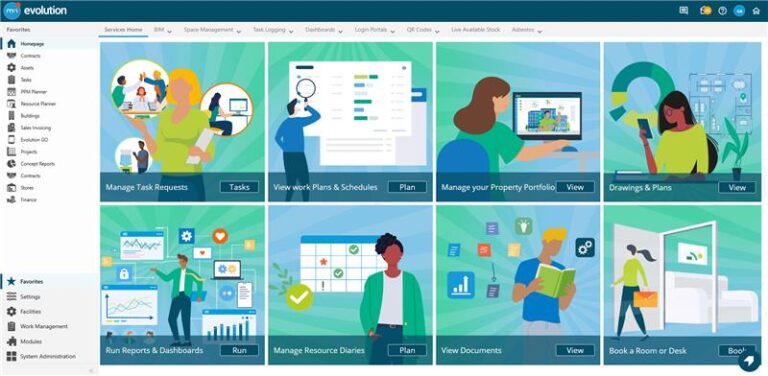This article originally appeared in the January/February 2019 issue of FMJ
As one of the fastest growing school districts in the state of Texas, the New Caney Independent School District (ISD) knew that a decision had to be made — they could begin planning for the rising student population or be forced into a reactive mode in the operations, management and planning for their facility portfolio.
In 2016, New Caney ISD commissioned a demographic study that analyzed student locations, potential growth based on new housing, trends occurring in student relocation patterns and other economic factors relevant to the district. The demographics study, conducted by Population and Survey Analysts, projected an annual growth of more than five percent on average over the next 10 years. Moderate enrollment projections anticipated growth by more than 50 percent by the year 2025.
To address this growth and ensure students will have quality facilities in the future, forward-thinking officials at New Caney ISD embarked on a methodical approach. This approach, which ultimately led to the passing of a US$200 million bond program, included the following three steps: strategy development, design standardization with assessments and well-coordinated stakeholder engagement.
Step 1: Strategy Development
To determine the need for capital expenditures, planning typically progresses in the following way:
- Understand the current position
- Define the long-term goal, and
- Develop a strategy to meet the long-term goal
These three parts are apparent in every facility planning exercise from small to large plans. First, the organization must understand its current position from many angles. These can be internally driven needs such as aging buildings that need to be replaced or external factors such as population increases or decreases that require the organization to react. Based on these internal and external factors, the long-term goal should be developed. This long-term goal will determine the strategy and the subsequent plan of action.
These three parts showed up in New Caney ISD’s planning process. The demographics report showed officials that they would continue to see growth in the student population. They were also aware that several facilities in the inventory were reaching the end of their lifecycle. It became apparent that many of these facilities not only needed to be replaced, but additional space was also necessary.
However, zeroing in on the specific plan required more thought. Knowing that additional study would be required, New Caney ISD sought the help of professionals through a Request for Qualifications (RFQ) procurement process. The RFQ laid out the need to develop facility design standards, conduct a comprehensive facility condition assessment, and finally, to collaborate with a community of stakeholders to develop a long-range facility plan for New Caney ISD. Once this strategic plan was in place, the district selected a national planning, engineering and program management firm to achieve its objectives.
Step 2: Facility Design Standardization and Data Collection
While planning a facility portfolio, an organization must understand how its buildings look now and how they envision their look and feel in the future. This can be done in two phases: developing facility design standards and performing a comprehensive facility condition assessment (FCA).
Step 2A. Develop facility design standards
One way to dictate the overall look and feel of facilities is to develop design standards. The final design standards document will look different for every enterprise, but it should have the following components:
- List and define all space types
- Define planned use for the spaces
- This includes the types of user groups, objectives of the space and activities that will take place within each space
- Design considerations for lighting, power, data, mechanical, plumbing, etc.
- The type of furniture, fixtures and equipment for the planned space
- Estimate expected size for each of the space types and/or number of individuals served
- Create adjacency diagrams, or where spaces should be relative to others
For facility design standards, the overall intent is the same: to govern the way a facility is to be designed. The documentation should provide a design professional with the parts and pieces necessary to develop a set of design documents that meet the organization’s requirements.
In the case of New Caney ISD, the facility design standards defined space types at different school levels — elementary, middle and high school. Furthermore, at each grade level, spaces were defined as site spaces, academic core spaces, special education, fine arts, media center, physical education, administration/guidance, child nutrition, building support and several other nuanced specialties. Adjacency diagrams were also developed to show the expected relation of space types to one another within the facility.
To develop these design standards, multiple meetings were held with the school district’s educational staff and leadership of various departments. Following these discussions, the needs of each space were defined based on their educational requirements.
Step 2B. Comprehensive facility condition assessment
The comprehensive facility condition assessment identifies, quantifies and develops a qualitative rating for all parts of the existing facility. This type of study can be used to develop cost estimates, facility condition index (FCI) ratings and to provide forecasting for facility needs.
How to conduct a comprehensive facility condition assessment
The first step in understanding the overall state of a facility portfolio is conducting a comprehensive facility condition assessment. An organization often lacks detailed understanding of their facility’s condition, the age of the building(s), the need for improvements and other similar information.
- There are three key factors in the facility condition assessment process:
- Identify a facilities assessment professional with the right experience
- Choose the right software tool for the job
- Establish a methodical facility assessment process that defines how data is collected, how facility replacement values are derived and how cost data is developed
For more details about the facility condition assessment process, reference the article “Benchmarking the Budget” in the March/April 2018 issue of FMJ.
Through the comprehensive facility condition assessment, New Caney ISD gained an overall understanding of the conditions of their facilities for comparative purposes. Through the data obtained from the FCI, the facilities in the worst conditions were easily identified. Furthermore, the district created a forecasting system based on their facility portfolio. Supporting evidence and data helped shed light on the conditions of several aging facilities and their overall effect on the facility portfolio and how facilities compared to one another.
Step 3. Stakeholder Engagement
The final piece of the process in planning a bond program, or any request for improvement funding, involves stakeholders. As defined in the Project Management Body of Knowledge Guide, a stakeholder is anyone whose interest in the project must be considered during project work.
Depending on the industry, organization, end user and funding mechanisms, stakeholders can range from one specific individual with a lot of authority and decision-making power to larger public-focused groups with collective decision-making power. Often, the mechanism for funding projects — whether private or publicly funded — is a leading indicator of the mix of stakeholders.
Stakeholder engagement can be summarized into the following four elements:
Mobilization
Mobilizing a stakeholder group first involves identifying the individuals that are necessary in the decision-making process and then reaching out to them to gauge their interest in participation. For New Caney ISD, stakeholders identified by district officials included parents, staff, board members, citizens and business owners. New Caney ISD convened each of these stakeholders for a total of eight meetings over four months with the intent to develop a long-range facility plan for the district.
Communication
Communication is at the heart of the stakeholder engagement process. Communication should flow between all parties and can be categorized as outbound or inbound communication. Outbound communication is the information that is shared from the organization to the stakeholder and will include things such as the reason for involvement, study results and reasons for the requests that are made. Inbound communication can be described as the feedback received from stakeholders.
For each of the first six meetings, stakeholders at New Caney ISD were provided with a structured approach to the communication process. Each meeting centered around a specific theme and laid out the goal, purpose, charge and function of the long-range facility planning committee. Outbound communication involved sharing demographic projections, development of the facility design standards and results from the facility condition assessment. Inbound communication included opinions and clarification centered around the information that was discussed. Through the inbound communication, a list of discussion topics around issues and needs within the district was developed. This communication process helped form the basis for further discussions.
Consensus
Consensus in decision making is defined as a process in which individuals decide to support a decision that is in the best interest of the group. Developing a consensus among a group of stakeholders with individual concerns, perspectives and motives requires a process, forethought and clear communication. A point person in the group leadership will facilitate discussion and the process governing the group. Individuals must agree to set aside personal interests to make decisions that satisfy the best interest of the group.
While the first six meetings at New Caney ISD centered around communication, the last two focused on consensus. The district’s planning and engineering firm facilitated consensus meetings and stakeholders discussed the topics and issues that surfaced during the communication phase. Stakeholders defined the top priorities that were most important for the district to pursue. These top priorities included the construction of a new high school and the replacement of an aging middle school and elementary school. Based on this consensus-oriented approach, the long-range facility planning committee developed a set of project options with a priority ranking and timeline for each option.
Recommendations
Finally, the group of stakeholders must deliver recommendations to the authoritative body for action to be taken. Depending on the authority structure, the recommendations can be given to an individual company president, chief executive officer, shareholders, board of directors or a board of trustees.
For New Caney ISD, recommendations based on the planning committee’s work were brought to the district’s board of trustees. These recommendations consisted of a series of priority projects that the planning committee wanted the board to consider as part of a bond referendum. The board, subsequently, approved these recommendations and called for the bond referendum.
Outcome
On May 5, 2018, New Caney ISD voters passed a US$200 million bond program. The bond includes four projects that address priority needs in the school district: a US$110 million high school, a US$52 million middle school, a US$26 million elementary school, as well as other additions and security upgrades. The new facilities will serve an additional 2,340 students across the elementary, middle and high school levels. New Caney ISD’s well-planned approach helped set the course for providing students the environment and infrastructure needed to succeed in the 21st century.






